Portable Sanitation Was Essential to Building a Toronto Landmark
CN Tower Toronto: World’s Tallest Building from 1975 to 2007
The construction of the “landmark of Toronto” was innovative and creative. Built by some 1,500 workers between 1973 and 1975, portable sanitation was a definite need. Restroom units provided by Bill Reynolds, Sr., and his company, Johnny On the Spot, based in nearby Model, New York, contributed to the tremendous success of this project.
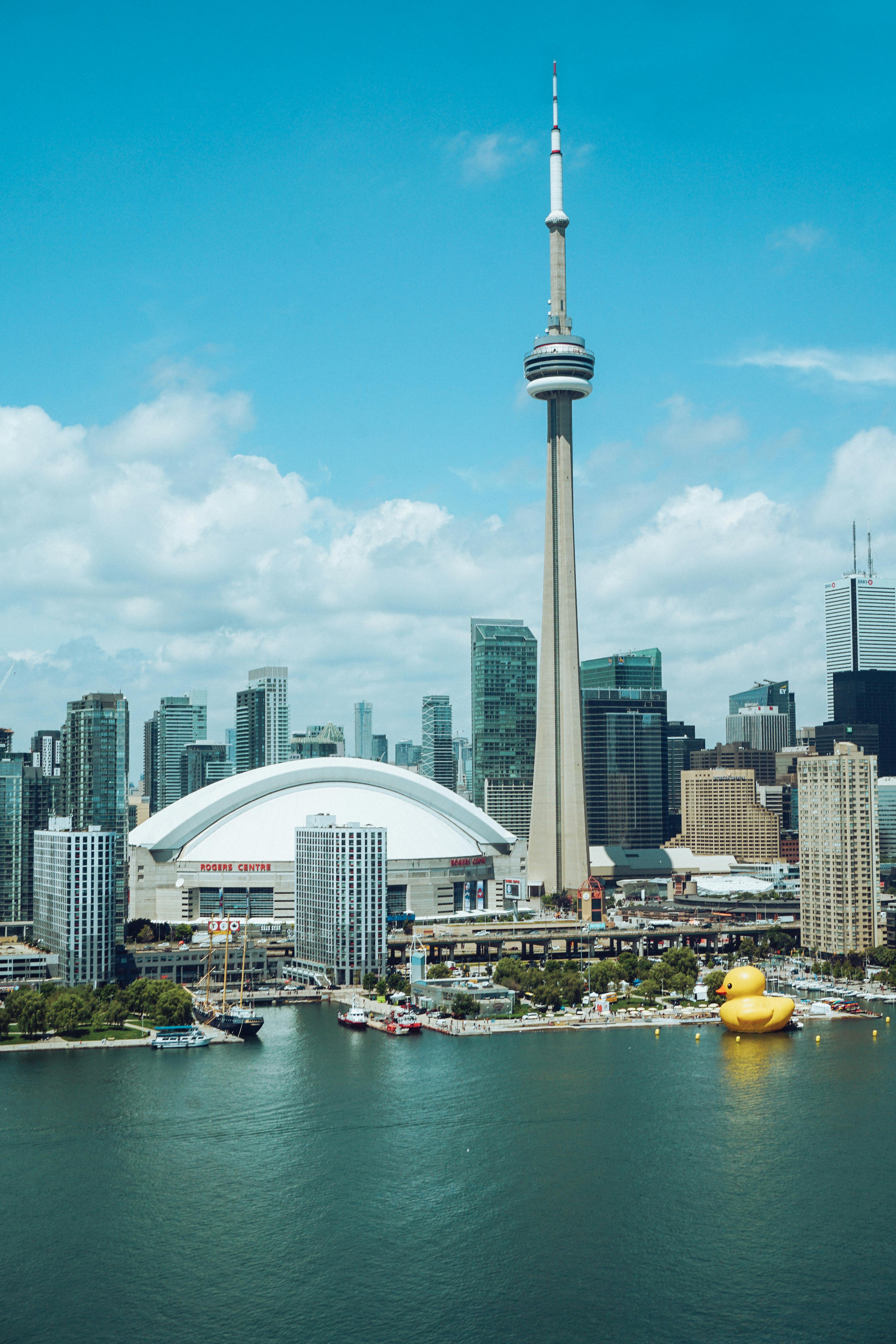
Why Build Such a Tall Structure?
Communication problems in the downtown Toronto area dictated a tall structure to transmit radio waves. Toronto experienced a huge building boom in the 1960s, and skyscrapers began dominating the landscape. Communication signals were hampered and all the new businesses in the area suffered.
The structure was built on former railway lands owned by the Canadian National Railway Company, hence the name “CN Tower.” The motivation for CN was to highlight the strength and importance of the railroad industry in Canada.
Construction History
This challenging project began on Feb. 6, 1973. Huge numbers of workers and equipment would be needed. Some 56 tons of earth and shale had to be removed to establish the foundation. When completed four months later, the base was 22 feet thick and consisted of 9,200 cubic yards of concrete, 450 tons of rebar, and 36 tons of steel cable.
The tower itself was built using an innovative “slipform process” whereby a large metal ring would be filled with concrete and allowed to harden, forming the base of the tower. A hydraulic lift would then position the metal ring above the completed area and, once again, concrete would be poured into the mold and allowed to harden. As this process continued upward, the metal ring would be slightly decreased in circumference before being filled with concrete. As the tower rose, the shape began to get steeper and steeper, forming a pinnacle at the top for the next phase of construction.

In August 1974, construction of the main level of the CN Tower began. Using hydraulic jacks, 12 steel and wooden brackets were raised to the top of the concrete to serve as supports for the main observation decks. The communications antennae—the primary purpose for this project—were put into place by a U.S. Army sky crane helicopter nicknamed “Olga.” Olga placed 36 sections of antenna segments on top of the observation decks. The project was topped out on April 2, 1975.
On June 26, 1976, the CN Tower opened to the public. Among its many features are three observation areas, the 360 Restaurant, and the tallest metal staircase on Earth with 2,579 steps—should you want to walk them!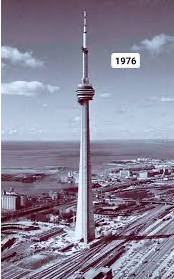
Portable Restrooms
With the magnitude of this project, one can realize the importance and the necessity of portable sanitation throughout all phases of construction. Johnny On The Spot provided the units. Bill Reynolds, Jr. shares this information about the work of his father, Bill Reynolds, Sr. on the historic jobsite:
“These fiberglass units were made by my father’s company in Athens, Ohio, and were blue and white in color. This color scheme matched the blue and white ‘Big John’ units that he provided at the Woodstock Concert in 1969. Bill Sr. had an office in Toronto with a full fleet of trucks, units, and office personnel to serve this growing city. I do not know how many units were on this jobsite as I was only 13 at that time.”
The main office for Johnny On The Spot was in Model, New York—just 85 miles from Toronto. The manufacturing facility in Athens, Ohio, was 500 miles away from the CN Tower site.
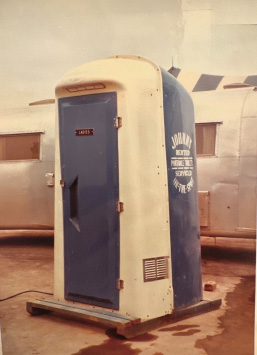
Above: Johnny On The Spot fiberglass unit manufactured by Bill Reynolds, Sr. for his company’s use in the early 1970s.
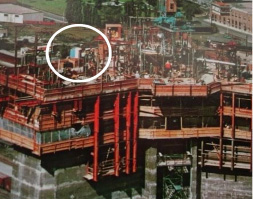
Above and below: Vintage pictures of the CN Tower Site show these blue and white fiberglass units.
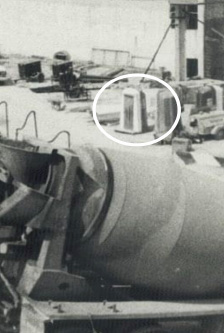
Below: On the freight elevator in the CN Tower during construction

Facts about CN Tower
Technically, the CN Tower is not a building because it does not have floors continuously from the ground. It is the third tallest tower in the world and it is the 10th tallest free-standing “structure” (building or tower) in the world. Finally, it is the tallest structure in the western hemisphere. Portable sanitation played a vital role in the construction of this Toronto landmark.
For even more interesting facts on the history of our Industry and of our Association, click on the links below and order your History Book today. All proceeds benefit the PSAI Scholarship Program.
